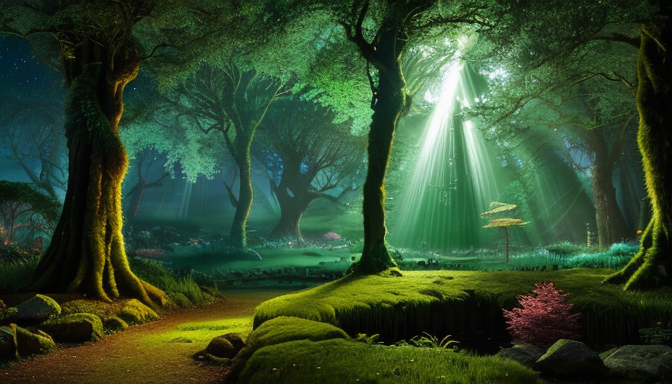Have you ever wondered what lurks beyond the veil of our world? Mythical creatures have fascinated humanity for centuries, weaving their way into the fabric of countless cultures. From the ancient scrolls of Mesopotamia to the vibrant tales of Indigenous tribes, these beings serve as a bridge between reality and the fantastical. They embody our fears, hopes, and the mysteries of nature, captivating our imagination and stirring our curiosity.
Take the Chupacabra, for instance. This infamous creature, often depicted as a small, reptilian beast with sharp fangs, has made headlines for its notorious habit of preying on livestock. Originating from Puerto Rican folklore, the Chupacabra has sparked numerous sightings and stories, each adding layers to its legend. It’s not just a monster; it’s a symbol of the unknown, a reminder of how folklore evolves as it travels through generations.
Then there’s the Bunyip, a creature cloaked in mystery from Australian Aboriginal mythology. Described variously as a water-dwelling beast with a terrifying appearance, the Bunyip represents the deep connection between the land and its people. Its presence in stories has not only entertained but also served as a cautionary tale, warning against the dangers of venturing too close to the water’s edge.
These mythical beings, along with countless others, invite us to explore the rich tapestry of human culture and imagination. They remind us that while science explains the world, myths add color and depth, turning the mundane into the extraordinary. So, are you ready to dive deeper into these enchanting legends?
[The Enigmatic Chupacabra]
The Chupacabra, a name that sends shivers down the spine of farmers and livestock owners alike, is a legendary creature that has captured the imagination of many. Originating from the Spanish words “chupar” (to suck) and “cabra” (goat), this creature is infamous for its blood-sucking habits, primarily targeting livestock such as goats. But where did this bizarre being come from? The tales of the Chupacabra first emerged in the 1990s in Puerto Rico, where it was reported that several goats were found drained of their blood, leaving behind only the lifeless husks. Could it be a product of folklore or a misunderstood animal? The debate continues!
Sightings of the Chupacabra have spread like wildfire across the Americas, with reports coming in from various regions, including Texas and Chile. Descriptions of this creature vary widely, but many agree it has a spiky back, glowing red eyes, and a menacing stance. Some even claim it resembles a dog or a reptile, adding to its mystique. The Chupacabra has become a symbol of fear and fascination, inspiring countless documentaries, books, and even movies. Its cultural impact is undeniable, as it has woven itself into the fabric of modern folklore.
So, what does the Chupacabra represent in our society? Is it merely a reflection of our fears about the unknown, or does it serve as a reminder of the ancient myths that have shaped human understanding of the world? As we explore the depths of this enigmatic creature, we find ourselves drawn into a narrative that transcends generations, inviting us to ponder the mysteries of the universe.
![[The Mysterious Bunyip]](https://www.domwiki.org/wp-content/uploads/2025/04/mythical-creatures-you-didnt-know-existed_2.png)
[The Mysterious Bunyip]
The Bunyip is a captivating creature from Australian Aboriginal mythology that has intrigued both locals and visitors alike for centuries. Often depicted as a fearsome water-dweller, this enigmatic being is said to inhabit swamps, creeks, and billabongs, lurking just beneath the surface. Imagine a creature that embodies the very essence of the murky waters it calls home, a blend of mystery and danger that has sparked countless tales and legends. But what exactly is the Bunyip, and why has it captured the imagination of so many?
Originating from various Aboriginal tribes, the Bunyip’s descriptions vary widely, leading to a rich tapestry of interpretations. Some portray it as a large, dog-like creature with flippers, while others describe it as having a long neck and a horse-like head. This diversity in representation reflects the deep connection between the creature and the landscapes of Australia, symbolizing the fears and wonders of the natural world. Many stories recount harrowing encounters, with the Bunyip often seen as a guardian of the water, protecting its sacred domain from intruders.
Throughout history, the Bunyip has served not only as a source of fear but also as a powerful cultural symbol. It has been used to teach lessons about respect for nature and the importance of community. In fact, many Aboriginal elders share stories of the Bunyip to instill a sense of caution among children when near water. The legend of the Bunyip continues to thrive in modern culture, inspiring art, literature, and even tourism. So, the next time you find yourself near a tranquil Australian waterway, ask yourself: could the Bunyip be watching from below?
Frequently Asked Questions
- What is a Chupacabra?
The Chupacabra is a legendary creature known for its eerie blood-sucking habits, primarily preying on livestock like goats. Originating from Latin American folklore, this creature has sparked countless stories and sightings, making it a staple in cryptozoology discussions.
- Where does the Bunyip come from?
The Bunyip hails from Australian Aboriginal mythology, often depicted as a mysterious water-dwelling beast. Its tales vary widely across different tribes, embodying the fears and beliefs of Aboriginal culture, and it remains a fascinating part of Australia’s mythical landscape.
- Are there any real-life sightings of these creatures?
While many claim to have seen the Chupacabra or the Bunyip, most sightings lack concrete evidence. These stories often blend myth with reality, keeping the legends alive and intriguing to those who love a good mystery!
- Why are mythical creatures important to cultures?
Mythical creatures often serve as cultural symbols, teaching lessons or explaining natural phenomena. They connect people to their heritage and can even reflect societal fears or values, making them vital to understanding a culture’s history.

Recent Comments